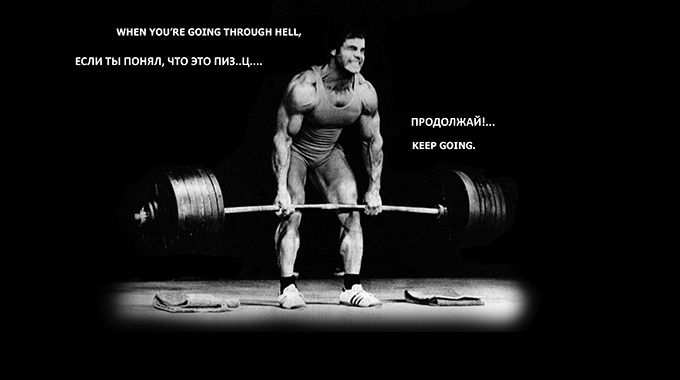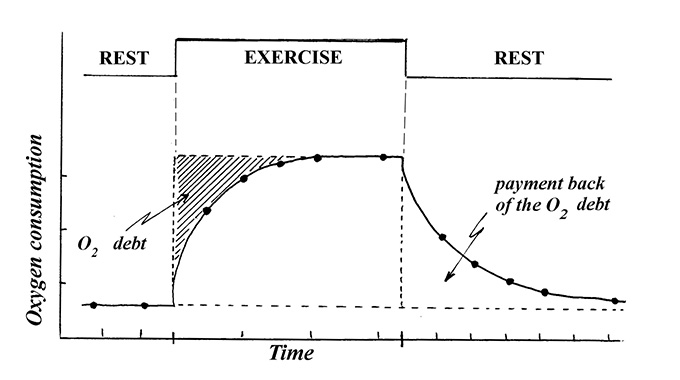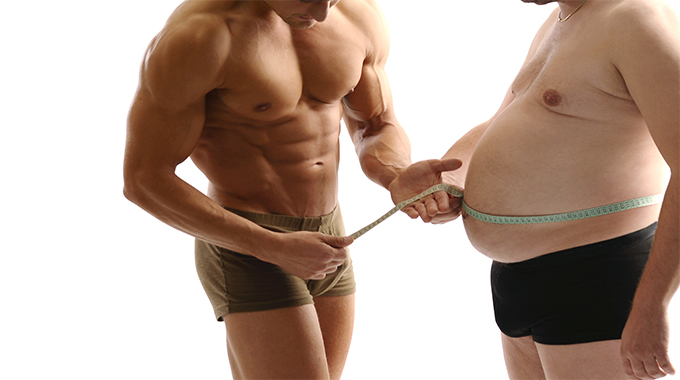What does “a proper” workout in the Tabata style mean? A successful workout regimen leads…
How to lose weight for good: burn it today, and it will keep burning the day after tomorrow
4.
How to lose weight for good: burn it today, and it will keep burning the day after tomorrow
Well, who doesn’t know that it is necessary to be more active if you want to lose weight? The observations of people of “the Western type” confirmed that only 40% of energy was spent actively and, what’s interesting, 60% was spent while resting (Black, Coward, Cole, Prentice, 1996). We are getting fat. Shall we move more? Shall we buy a treadmill for our living room? Plus a stair stepper? It’s unfortunate, but the research shows that a typical workout of 30 minutes 3 times per week, increases energy expenditure by only 5%. We would have to exercise 90 minutes non-stop every day if we wanted to achieve the level of energy expenditure that would make us healthier (Paoli, Moro, Marconi, Neri, Bianco, Palma and Grimaldi, 2012)! Who has so much free time? What about time for work, family and drinking beer?
So what shall we do?!
I won’t be mistaken if I say that there are a million and one strategies and training programs designed to burn fat. Open any flashy magazine, and it is guaranteed that you will find “the most effective one.” Okay, I can’t possibly compare all this information or even familiarise myself with most of it. But I know the basic principles of human physiology, and I am familiar with scientific findings on this topic. These findings were not sponsored by producers of sport nutrition or treadmills, but by unbiased research institutes. Let’s have a close look at these findings.
Scientists have been studying the amount of energy consumed by a body at rest (Resting metabolic rates – RMR or “basal metabolism”) for 200 years, starting from Lavuazie’s work at the end of the 18th century. When a group led by Schofield in 1985 wrote an overview of this topic, they covered more than 8000 articles!
Krogh and Lindahard (1913) were the first to measure and describe the oxygen debt and oxygen deficit phenomenon a hundred years ago; the first theory based on this was developed 10 years later (Furusawa, Hill, Long and Lupton, 1924). Subsequently, this phenomenon was given the name “excess post-exercise oxygen consumption” (EPOC).
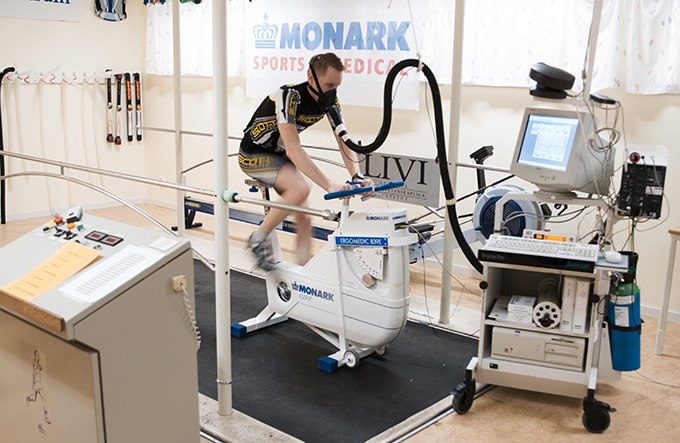
You have to understand one simple thing: the calories you burn during your workout is nothing in comparison to what happens after it. You don’t lose weight when you are running on a treadmill or marching on a stair stepper; you lose weight when your body continues burning the same evil calories two, three or even four days after your workout. It is called exercise after-burn. It is something like “a delayed effect:” even though physical activity has already been completed, the consequences of it are still taking place. It makes sense that the most effective training in terms of burning calories is not when you sweat like hell, but when there is a maximum “delayed effect.” In the English speaking world it is called “after-burn,” or a more scientifically accurate — excess post-exercise oxygen consumption (EPOC).
The whole point is that our body is trying to recover after exercise, to return to its prior state. Our body starts “burning” everything. Oxygen is “the burner.” This way our body finds energy to “return” to its normal state. It is considered that every litre of oxygen accounts for 5 “burnt” calories.
Notice that I put the words “burning” and “burnt” into inverted commas. It is because whatever burns in our body doesn’t get burnt like in a real fire. That’s why counting calories of products doesn’t make any practical sense; it is just an illusion that we really want to believe. It is hilarious to think that 100g of vodka has the same amount of calories as 100g of a pastry. So what? We know perfectly well that half a litre of vodka and half a kilo of pastries would have a completely different effect on your waist, right?
This is what happens during EPOC (Borsheim & Bahr, 2003):
- The recovery of an energy source. First of all, we are talking about ATP (Adenosine triphosphate) and phosphocreatine. Apart from that, “non-inflammable” lactic acid is converted into pyruvate, which can be “burnt” in a cell “oven”. The body recovers glycogen spent on a workout (we metabolise glucose in the form of glycogen).
- Blood enriched with oxygen and hormone balance. You need energy to work, and food is converted into energy under the influence of a huge quantity of oxygen. This oxygen expenditure has to be recovered as quickly as possible. Many hours after the workout is over and breathing is normalised, the body continues consuming a huge amount of oxygen. Moreover, the body activates an increased amount of hormones, a balance of which has to be normalised after strenuous work.
- The body temperature falls. Basic physics shows that a considerable amount of heat is generated when muscles release energy while exercising. This demonstrates the law of energy conservation in action! Body temperature has to be normalised, and it requires spending energy (by other systems).
- And, of course, breathing and cardiac rhythm have to be normalised.

Different mechanisms work here at a different pace. It takes us from 15 minutes to 48 hours to fully recover. Of course, the rate of recovery depends on the intensity and the duration of the workout. Also, the rate of recovery depends on the individual’s physical strength level and age. It also depends on the gender (Borsheim & Bahr 2003), no matter how much we want to believe in gender equality… Everyone is equal in the face of a legal system, but physiology has its own laws: men “burn” 15-20% more calories when exercising in comparison to women who exercise with the same level of intensity. American researchers from five universities (LeCheminant et al., 2008) came together to investigate the impact of 16-months aerobics training on EPOC among obese men and women. They used a medium-level intensity walk on a treadmill. The results were unbelievable. It turned out that the training had an effect on men and men only. Well, it would be better if women never became obese, because unfortunately a treadmill wouldn’t save them, as it was proven. It’s not fair, right? Osterberg & Melby (2000) decided to study EPOC among healthy well-trained young women (under 27 years old). The experiment continued for 6 months. The training consisted of five sets with 10 different exercises each, repeated 10-15 times. Their work reached the end — total exhaustion. Bench press and barbell bent over row, leg press and leg curl, abs, dead lift, biceps curl and triceps pressdown, lunges and lateral deltoid. EPOC considerably increased and remained at a high level for 16 hours. Binzen, Swan & Manore (2001) studied women (29-31 years old) who previously did powerlifting and had a reasonably high level of fitness. The experiments showed that EPOC was quite noticeable and the utilisation of fat increased significantly. In other words, women can also lose weight if they work out properly. Would they be able to do that? Perhaps, they would rather be walking on a stair-stepper? It is also training; it’s meaningless, but at least it’s not too hard.
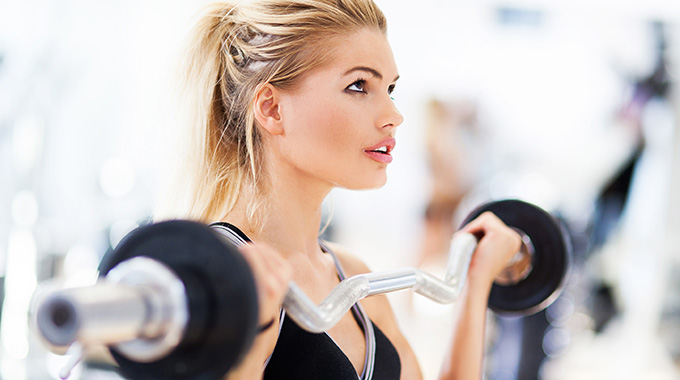
Speaking about cardiovascular exercise (a stationary bicycle, a treadmill, etc.), the more intensive the exercise, the more intensive and longer EPOC there is (Bahr and Sejersted, 1991; Smith and McNaughton, 1993; Phelain et al., 1997). At the same intensity, the longer the exercise is, the more intensive and longer EPOC (Bahr et. al., 1987; Chad and Wenger, 1988; Quinn et al., 1994). Australians LaForgia, Withers and Gore (2006) studied the effect of exercise of different intensity levels and duration. They found that we spend from 6 to 15% of energy while exercising, everything else gets burnt either afterwards (if it was a proper workout) or stays inside us, and is stored for later. The problem is that exercising at the right intensity is not accessible to the average individual. So, don’t underestimate the contribution of exercise itself as 15% plays a significant role!
Although some research findings (Sedlock, 1992) on the surface contradict this data, we need to remember that not only the type of exercise, but also the participants’ gender, age and the level of fitness play a role. The type of position undertaken (seating, standing, lying) is also important in interpreting the results of the experiments.
The conclusion is simple: having found the right level of intensity, don’t forget to decide on its duration.
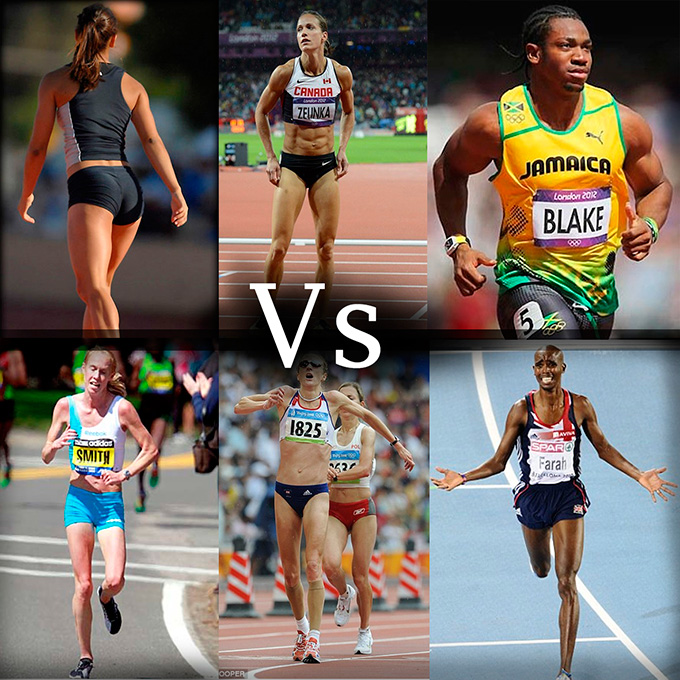
Moreover, there is a difference between the effect of continuous and interval training: interval training is more effective (Kaminsky et al., 1990; Laforgia et al., 1997; Melby et al., 1993; Laforgia et al., 1997). So, doing two sets of 25 minutes on a treadmill is more effective than training continuously for 50 minutes. High intensity training (two rounds of 5 sets, 10-15 repeats with weight of 60-70%) is less effective during the workout, but the “post-exercise” effect continues taking place for a while (Burleson et al. 1997; Osterberg & Melby, 2000). Even a “torn” tempo is more effective, when, for example, one 50-minutes training with 50% intensity is interrupted with two 70% “spurts” of 10 minutes duration (Kaminsky & Whaley, 1993).
By the way, what if we compare aerobics with weights?
For example, Elliot with friends (1992) compared stationary bicycle exercise (40 minutes at 80% of heart rate) with circuit training (4 sets, 8 exercises, 15 repetitions at 50% of maximum weight) and weight training (3 sets, 8 exercises, 3-8 repetitions at 80-90% of maximum weight). Giletter with colleagues (1994) compared stationary bicycle exercise (60 minutes at 50% VO2 max) and high-intensity training (5 sets, 10 exercises, 8-12 repetitions at 70% of RM). Thornton and Potteiger (2002) independently compared high-intensity exercise (2 sets, 8 reps at 80%) and low-intensity exercise (2 sets, 15 reps at 45%).
You won’t believe it, but high-intensity exercise turned out to be more effective than circuit training and low-intensity exercise, while bicycle exercise fell behind every other type of training by almost a double. Regardless of this, the public always prefers to run on a treadmill, only imitating low-intensity exercise, and they definitely would never say yes to a high-intensity session. I would like to reiterate that the obvious benefits of high-intensity exercise over using fitness equipment for exercise were proven 20 years ago, but amateurs continue to run on a treadmill.
Circuit training is obviously very effective (Haltom et al., 1999). It is also obvious that weight lifting is much more effective than aerobics (Burleson et al., 1998). First of all, weight training is effective, because it interferes with homeostasis at a much greater level. It occurs because of the increased level of lactate in the blood and more intensive work of hormones-catecholamine (epinephrine and norepinephrine), as well as anabolic hormones (Reynolds and Kravitz, 2001). It is a double-edged sword: despite the obvious proof, not everyone wishes to work hard and intensively; a lot of people prefer to sweat a little bit on a treadmill, choosing the perceived easier option.
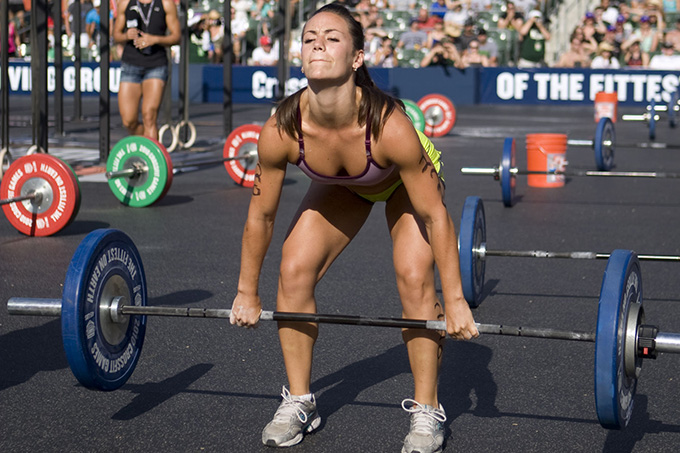
You need to understand the importance and uniqueness of weight training. For example, let’s compare two types of training of the same volume, but different intensity: circuit training (3 rounds with 6 exercises, 10-12 repeats with 50% weight and 30-seconds rest) and a standard load (3 sets, 6 exercises, repeats to absolute failure with 80% weight and 120-seconds rest). Circuit training will be twice as more effective (Murphy and Schwarzkopf, 1992).
Schuenke, Mikal & McBride (2002) loaded young men (22-23 years old) with weights for 30 minutes (4 rounds: bench press, chest lift, squats – 10 reps to absolute failure). As a result, EPOC continued for much longer than expected for a 16-hours experiment. This high-intensity and high-volume weight training involves all main muscle groups and has minimal rest periods. This training has a much greater metabolic effect in comparison to other types of training (Pinto, Lupi & Brentano, 2012). According to my observations, not every experienced powerlifter is able to do a chest lift properly. Moreover, having earned a title of the Master of Sports in Weightlifting (when I was 25 years old), now, when I am 50 years old, I am being careful when it comes to this exercise. Again, we have concluded that the most effective exercises are not easily accessible for everyone.
Brazilian scientists made a big contribution to research into the effectiveness of training. In 2006, Foureaux, Pinto and Damaso proved that more intensive training ensures higher EPOC rates, and weight training is more effective than aerobics. Another Brazilian group (Farinatti, Neto, and da Silva) analysed 16 research studies, conducted in different counties; these studies focused on the effect of EPOC after different types of weight training. They concluded that workouts of a higher volume and intensity has a greater effect, but decreasing rest time (less than a minute between sets) doesn’t produce the effect of the desired increase in energy expenditure. Thus, circuit training with weights can overall be quite effective. Meirelles and Gomes (2004) researched the effect of different types of weight load on EPOC. They found that weights do their job during a workout and the effect continues for many hours after it. It is crucial to adjust the weight accurately, as the desired effect will depend on it. The training volume is the most important for energy expenditure during a workout, but intensity is more important for EPOC. A Brazilian group (Pinto, Lupi, and Brentano, 2012) conducted a similar study using contemporary measuring devices, having identical results.
The Italians also made a contribution. Specialists from different universities (Paoli, Moro, Marconi, Neri, Bianco, Palma and Grimaldi, 2012) compared the effect of traditional weight training (8 exercises, 4 sets, 8-12 reps with 1-2 minutes rest; a total of 32 sets) and high-intensity circuit training (6 reps, 20-seconds rest, 2-3 reps, 20-seconds rest; three exercises, 2-3 sets with 2.5 minutes rest between sets; a total of 7 sets). The measurements were done 22 hours after the workout. The study proved that high intensity circuit training is much more effective; however, the duration of the workout shouldn’t be very long, because inexperienced trainees are not able to handle such long and strenuous work.
Finally, British scientists shared a couple of findings. Speakman and Selman (2003) compared results of research on humans and animals. They painted an interesting and unexpected picture! Overall, EPOC phenomenon is similar among animals and humans, but there is one strange exception: flight training. It turns out that there is no difference between long and short flights in terms of their effect on metabolism. Of course, this phenomenon has deep roots: birds wouldn’t be able to survive in the course of evolution if flying was an unbearable strain. The combination of life-supporting systems for birds is very well adapted to flying and flying is not interfering with homeostasis at all, because it doesn’t require radical measures to restore, as flight is a norm for birds. However, we are much more interested in something else. It is important to understand that if a person has been training for a long time, it will give them an effect that is similar to birds’ training to fly. Long and adequate training induces changes: first of all, in the biochemical composition of muscles, second of all, in all systems providing for this work, and weight training becomes a norm. An athlete trains and lives in a training condition as naturally as a bird flies!
So, the conclusion is the following: if you dream about losing weight, combine cardio with weights, and the heavier the weights are, the better (not less than 80% RM). The duration of a workout should not be less than 30 minutes with an intensity not lower than 70% of VO2 max. Circuit training is very effective, but if you can work with heavy weights like a pro, it is better to lift a lot and quickly, rather than a little for a long time. No matter how much you love running on a treadmill, if you really want to succeed in getting rid of fat, you have to include weight training at least twice a week. Here, I am not talking about exercise machines for pretty girls, but about real weight lifting, free weights: barbells and dumbbells. There is a big difference!
